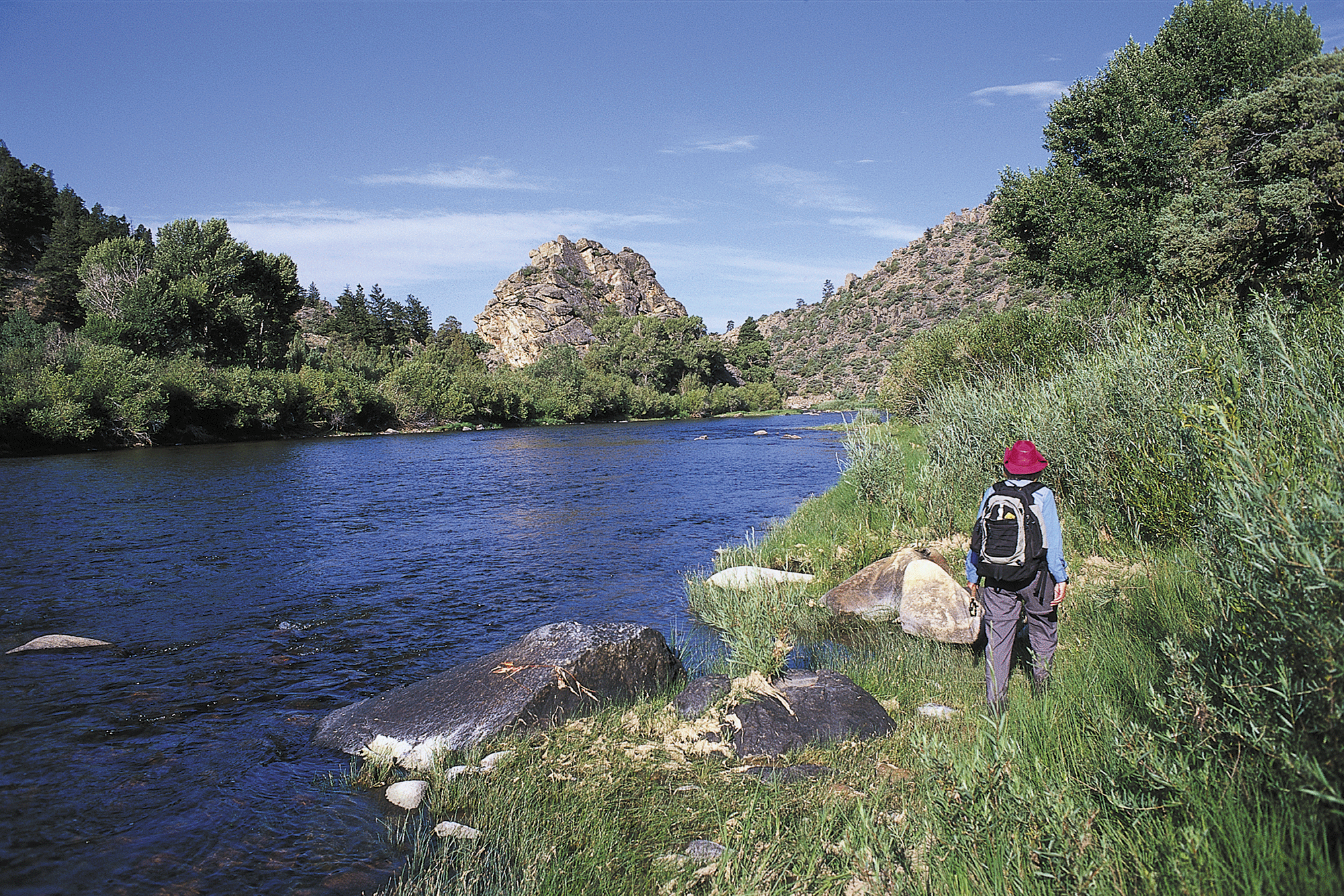
20 Oct Good Medicine On the North Platte
LEANING OVER A BRIDGE RAILING in Saratoga, Wyoming, on an edenic July morning I watched veils of Trico spinners levitated above the North Platte River, their spent brethren attracting hungry trout. Above an active pod, a local kid had ridden his bike to the river. He laid down perfect reach casts, allowing his spinner imitation to delicately drop 10 feet above the dimpled rises, then drift directly over the unsuspecting fish, fly first.
“What a life,” I thought, about growing up in Saratoga. There are some wonderful, well-known trout towns in the northern Rockies, places like Livingston, Ennis, and Jackson, where fly-fishing is integral to the culture. Located in south central Wyoming, Saratoga is off the average fly angler’s radar, but still warrants a berth in any Western trout town hall of fame. It’s got everything: trout-filled rivers and lakes, well-stocked fly shops, a diverse parade of special events and a friendly ambiance.
Long the heart of the upper North Platte, Saratoga has grown to approximately 1,700 people, with one foot in expanding high tech connectivity and outdoor recreation, the other in its historical timber, mining and agricultural past. There might be CEO-caliber private jets moored at the local airport these days, upscale dude ranches in the valley, but Saratoga remains a low-key place where aging Labs can still slumber safely in the middle of side streets. And, while the town supermarket is well stocked and modern, its walls are lined with a museum-caliber menagerie of Western big game trophies, gazing down at shoppers — still, pure Wyoming.
As the Tricos abated, I wandered back to the venerable Hotel Wolf, where my wife, Mary, had treated me to dinner and a room the previous night to celebrate my birthday. She had promised something special, “good medicine,” and picked the perfect spot. The hotel offers Victorian charm, a lively bar, and a popular restaurant grilling some of the West’s best steaks. It’s the kind of classy but casual joint where local ranchers, new residents, and visitors drift in famished as post-hibernation grizzlies, leaving late with back slaps and satisfied grins. Like us, the other anglers were just off the river, fish slime and spent caddis still coating their quick-dry clothes. No matter: The Wolf, like Saratoga, is our kind of place.
Queen of the North Platte
With a prime reach of the North Platte looping through town, anglers can finish breakfast at a local cafe, grab their rods, and amble down to the river. Perched at 6,786 feet in the aptly named “Good Times Valley,” Saratoga is flanked by the Sierra Madre Range to the southwest and the Medicine Bow Mountains to the east, the crest of which is the lake-splattered Snowy Range. For additional variation, a major tributary — the enchanting Encampment River — meets the Platte just upstream from town.
Saratoga’s centerpiece, the Hotel Wolf has treated visitors to 114 years of continuous service since it first opened on New Year’s Eve, 1893, with a gala masquerade ball and dinner. Still the town’s social hub, the two-story hotel was built by German immigrant, Frederick G. Wolf, for $6,000. Over the decades, the building has also provided various other town functions, serving as a stagecoach stop, barber shop, outfitter headquarters, art gallery, and even that old Wyoming standby, a drive-through liquor store. Following a thorough restoration, the hotel once again resembles what it looked like a century ago, and has been designated a National Historic Landmark.
Originally called Warm Springs, early Saratoga residents decided in 1884 to rechristen their new town after a more famous New York counterpart, Saratoga Springs. The word Saratoga was originally derived from an Iroquois Indian word meaning “place of miraculous water in the rock.” Native Americans in the region around Saratoga — including the Northern Arapaho, Northern Cheyenne, Oglala Sioux, Eastern Shoshone, and White River Ute — had long considered the springs a sacred neutral area, good medicine. They used them for their reputed healing properties, completing their therapeutic baths by leaping into the North Platte to cool down.
Like its Eastern counterpart, Saratoga eventually became widely known for its commercial mineral baths, which opened at the hot spring in 1878. Visitors soon flocked from as far as England to “cure” such ailments as rheumatism, paralysis, and kidney disease. Today, the Saratoga Hobo Hot Pool is still fed by 117-to 128-degree water; it’s run by the city, open 24 hours a day, free of charge, and remains a public commons where folks from all walks of life relax and mingle.
In addition to the baths and Hotel Wolf, copious trout populations enhanced Saratoga’s appeal as an early travel destination. In 1907, Saratoga began hosting the Railroad Day Celebration and Fish Fry, a blowout for visitors who feasted on 3,100 trout readily caught by locals in the North Platte. In an article on the first celebration, the Saratoga Sun observed:
“Many of our visitors found it of interest to stand on the bridge and watch and try to count the big trout that were visible in the clear water of the river … they couldn’t get a count on them, but it was estimated that there were more than 300 in sight.”
Its renown spreading, a 1910 story on Saratoga in The Outing Magazine was entitled, “The Greatest Trout Fishing Town in the World.” Saratoga’s current motto — “Where the Trout Leap in Main Street” — was borrowed from the title of a 1927 Outdoor Living magazine article on the area by writer Billy O’Neil. Local lore has it that O’Neil had been sitting on the riverside porch of Saratoga’s Sierra Madre Trout Club, perhaps observing the aerial antics of North Platte trout. Even in this age of unrelenting hype, the slogan seems perfectly appropriate displayed on Saratoga’s downtown light posts.
A curious bio-geographical omission for such inherently productive water, early settlers found the entire North Platte watershed devoid of trout, unlike its sister — Colorado’s South Platte — which harbored native Greenback cutthroats. According to local legend, the North Platte trout void was filled in the early 1870s, when a Union Pacific train transporting a shipment of trout was delayed near Fort Steele, Wyo., and the fish began dying. The crew reputedly backed the train over a North Platte bridge and dumped the surviving rainbows and brookies.
However they arrived, the river swarmed with trout by the 1890s, when anglers reported landing 10-pound rainbows and 5-pound brookies. Brown trout were also successfully stocked, and they too attained prodigious size. All three introduced trout species eventually found their way into the many nooks and crannies of the North Platte watershed, where they continue to flourish.
At its inception, before rushing into Wyoming, the North Platte coalesces in the lofty North Park of Colorado as a large freestone stream. Between the Colorado border and Bennett Peak, the river is pinched into rugged canyons, gaining speed, boulders, and some splendid campsites on surrounding public lands. The roughest patches in this upper reach, like Northgate Canyon in the Platte River Wilderness Area, offer good holes for sure-footed anglers to dunk stonefly patterns and play areas for expert kayakers.
Closer to Saratoga, the willow-fringed North Platte winds lazily through massive ranches, prime drift boat and hopper water, with scattered public access, including Veteran’s Island Park right in town. On the lower river, closer to Casper, the dam-regulated Gray Reef and Miracle Mile reaches are widely renowned for producing oversized trout. But Saratoga’s upper North Platte has remained out of the contemporary fishing media’s tailwater klieg lights. The payoff is spectacular country, opportunities for solitude, miles of blue ribbon, free-running water, and several thousand feisty trout per mile.
The Grand Encampment
After fueling up on huevos rancheros and icy Coronas at the downtown Lazy River Cantina, these two Helena, Mont., fly tramps stocked up on hot patterns, got the latest scoop, and prepared to explore more of the watershed. After my birthday bash, we had a hard time departing Saratoga, but we eventually did and were soon rolling 20 miles south toward the little town of Encampment, and the beautiful river that shares its name. The Encampment River is an alluring, productive trout destination. The stream was fondly regarded by the late, revered fly-fishing scribes, Ray Bergman and Joe Brooks. Adding to its attractiveness are numerous small tributaries and Hog Park Reservoir, an excellent stillwater nestled high in the Sierra Madres.
The Encampment rises amidst high snowfields in northern Colorado. Its name came from the Camp le Grand, or Grand Encampment of French Canadian trappers, who held a rendezvous along the stream in 1838. Flowing north into Wyoming, the river accelerates through a boulder-strewn canyon in the Encampment River Wilderness Area. A 16-mile trail follows the river through the chasm, dropping 1,100 feet and providing access to some of the stream’s most scenic water. Sharp eyes not fixated on strike indicators may spot elk or bighorn sheep, while artifacts left by old miners and rail tie cutters add intrigue. For fly anglers who enjoy hiking along pristine rivers, the Encampment gorge is a treasure.
The classic 1948 Humphrey Bogart film, “The Treasure of the Sierra Madre,” might as well have been set in Wyoming as Mexico. In 1896 a gold strike was made in the area, prelude to pandemonium. The next year, a rich copper deposit was also discovered, leading to development of the great Ferris-Haggarty Mine and the town of Grand Encampment.
A 16-mile long, water-powered aerial tram — the longest in the world — was laboriously erected to haul ore over the 10,600-foot high Continental Divide. Each of the tram’s 840 buckets transported 700 pounds of rock at four miles an hour to a new, riverside smelter in Grand Encampment. A boom ensued and the settlement swelled to 1,500 people, some depleting new riches in the burgeoning town’s nine saloons and two brothels.
Local boosters dreamed the town might become a new Butte, Denver, or perhaps Wyoming’s state capital. “Has the true El Dorado at last been discovered?” queried the Grand Encampment Herald in 1898. To facilitate transportation efficiency, the Saratoga and Encampment Railroad was completed in July 1908 from the Union Pacific mainline at Walcott, but it was too late. The euphoria deflated following shady stock sales, poor financial management, fires at the underinsured facilities, and a collapse in copper prices. The smelter shut down in 1913, the mining company went bankrupt, the town population shrunk in half, and “Grand” was eventually stripped from its name. Other mining towns scattered across the Sierra Madre soon winked out.
Today, Encampment and nearby Riverside are sleepy destinations, where anglers, hunters, and travelers gather in saloons, such as the Bear Trap and Mangy Moose, some spinning yarns just as fanciful as the old mountain men at rendezvous. The area’s rich history is preserved in the Grand Encampment Museum: One of the attractions is a vintage, two-story outhouse, the upper commode designed to remain serviceable even after many feet of mountain snow buried the lower unit’s entrance.
Mary and I serendipitously found a public campground near Encampment, an ideal base for canyon sorties. One morning, after watching her snooker trout with a Prince nymph dredged through a turquoise run, we headed back to our cottonwood-shaded camp to take shelter from the afternoon sun. We cracked cold beers and sat on the picnic table, watching a mule deer family. Hyperactive hummingbirds trilled and flitted below sage-covered foothills, periodically hovering close to inspect Mary’s rose-colored hat.
Good Medicine
The growing summer heat along the North Platte and Encampment rivers was putting the trout in a churlish mood, so we figured it was time to migrate to a higher, cooler portion of the drainage.
The Snowy Range is no misnomer. The range rears up mightily from the valley, its bounty of accessible alpine trout lakes collecting copious snowmelt, releasing it into streams cascading down to the North Platte. Even as the West has been sweltering and burning recently, this is a place where you can still find thick, summer snow banks to chill freshly caught brookies for dinner. The range’s topography is an Ice Age relict, with glacier-carved lakes, moraines, drumlins, and classic U-shaped valleys. Some glaciers still find refuge here, tucked amidst the highest peaks, soaring to 12,000 feet. July meadows are carpeted with kaleidoscopic wildflowers, pulsating with butterflies.
Like the Beartooth Mountains in southern Montana and northern Wyoming, the Snowy Range is unusual because you ascend a paved scenic byway (Wyoming 130) thousands of vertical feet to a 10,000-foot high plateau, winding through all major Rocky Mountain life zones. Once on top, travelers can select from one of several campgrounds or lodges perched near timberline, then pack a rod and hike to dozens of high lakes, linked by an excellent trail system. Brookies predominate, but there are also rainbows, browns, cutthroats, splake, and even goldens, the high country’s Holy Grail.
The surrounding Medicine Bow Mountains were originally frequented by Indians who held powwows and harvested prized ash and mountain mahogany for their bows. These weapons were infused with good medicine, providing a name for the range, surrounding national forest, and nearby town later made famous in Owen Wister’s novel, The Virginian. According to a regional history, The Medicine Bows: Wyoming’s Mountain Country (Thybony, Rosenberg, and Rosenberg, 1985):
The word “medicine” was … used by the plains tribes in reference to something powerful in a sacred way. An early ethnographer, Captain W.P. Clark (1885), said medicine could denote ‘holiness, mystery, spirits, luck, visions, dreams, prophesies,’ or ‘the concealed and obscure forces of nature, which work for good or evil.’ So, a medicine bow would have qualities beyond those normally associated with an excellent bow.
While we whipped out casts with our own graphite bows on Lookout Lake, a portly yellow-bellied marmot lay splayed out on a boulder, curiously observing our success. Our dry fly party along the scree-lined shore was interrupted by artillery blasts of thunder, echoing off the towering quartzite walls above us. With the first icy drops from the gray clouds, we clambered up the talus and hunkered beneath a pine to wait out the squall, as wind-driven sheets of rain swept the lake to froth. After 20 minutes, the tempest abated and trout resumed cruising the shoreline, guilelessly inhaling any Adams dropped in their path.
The next morning we peered from our sleeping bags at another large cold front bearing down on the range, portending more rain, or even snow. By then, we had satiated our alpine angling desires: We decamped, cued up The Band, and rock ‘n’ rolled back down the switchbacks to the “Good Times Valley” and Saratoga, ready to get re-supplied, cleaned up, and properly fed for more exploration.
Once again, the dining room at the Hotel Wolf was buzzing with fishing and ranch talk. After a glass or two of cabernet sauvignon, our steaks arrived, just as juicy and perfectly done as the week before. Afterwards, in search of more good medicine, we considered checking out the raucous bar again, or maybe the Hobo Hot Pool, but just slipped upstairs to our room.




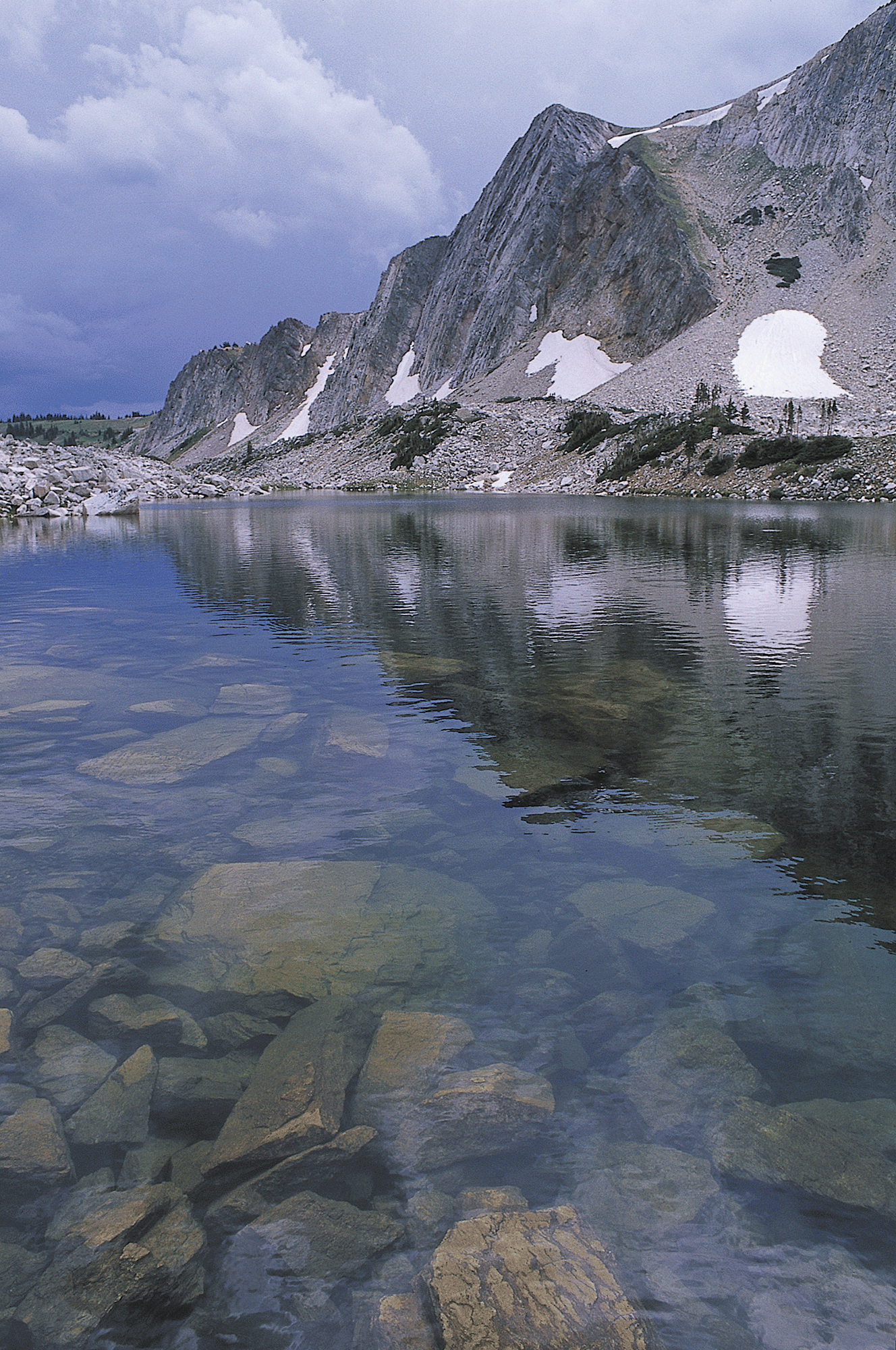
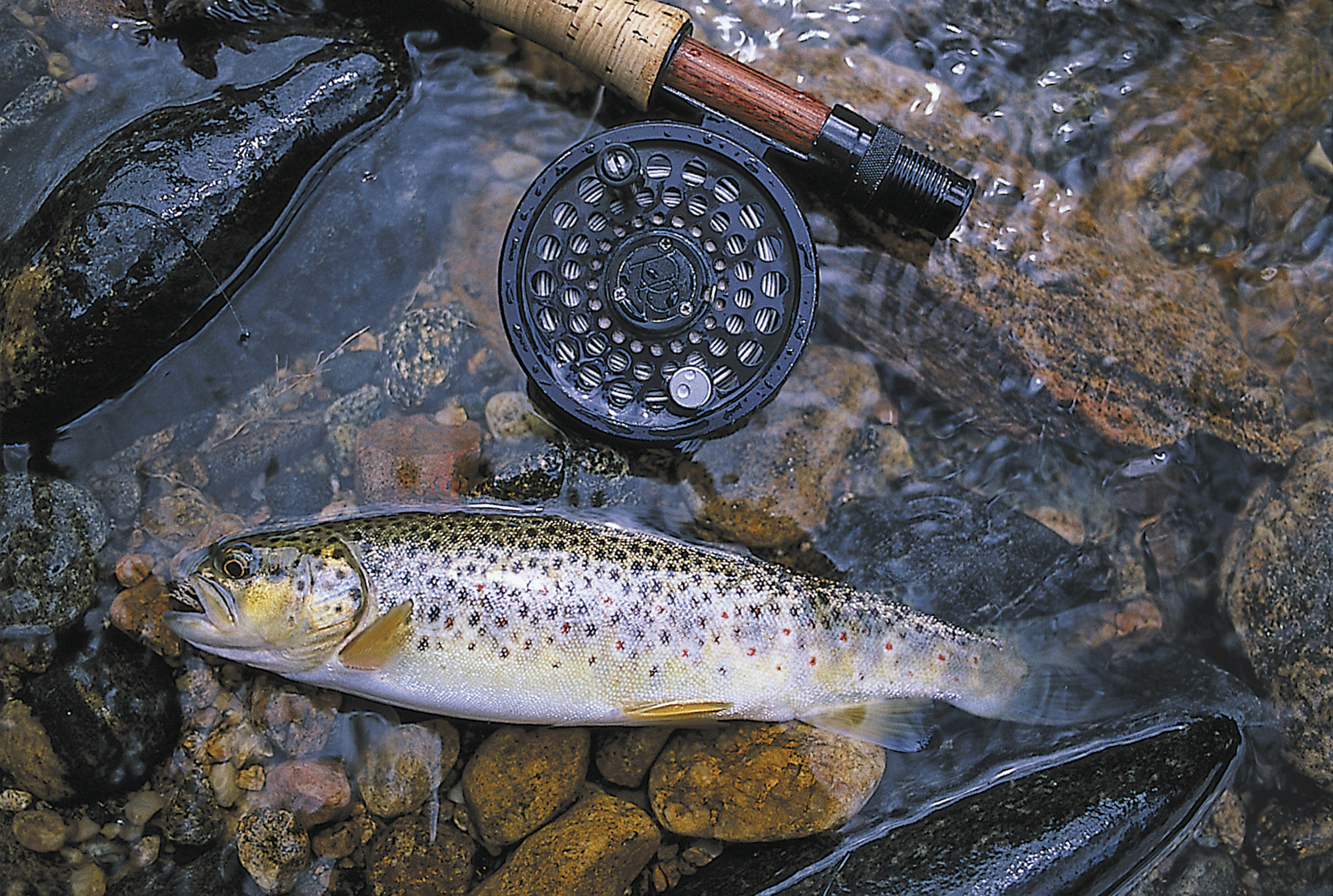
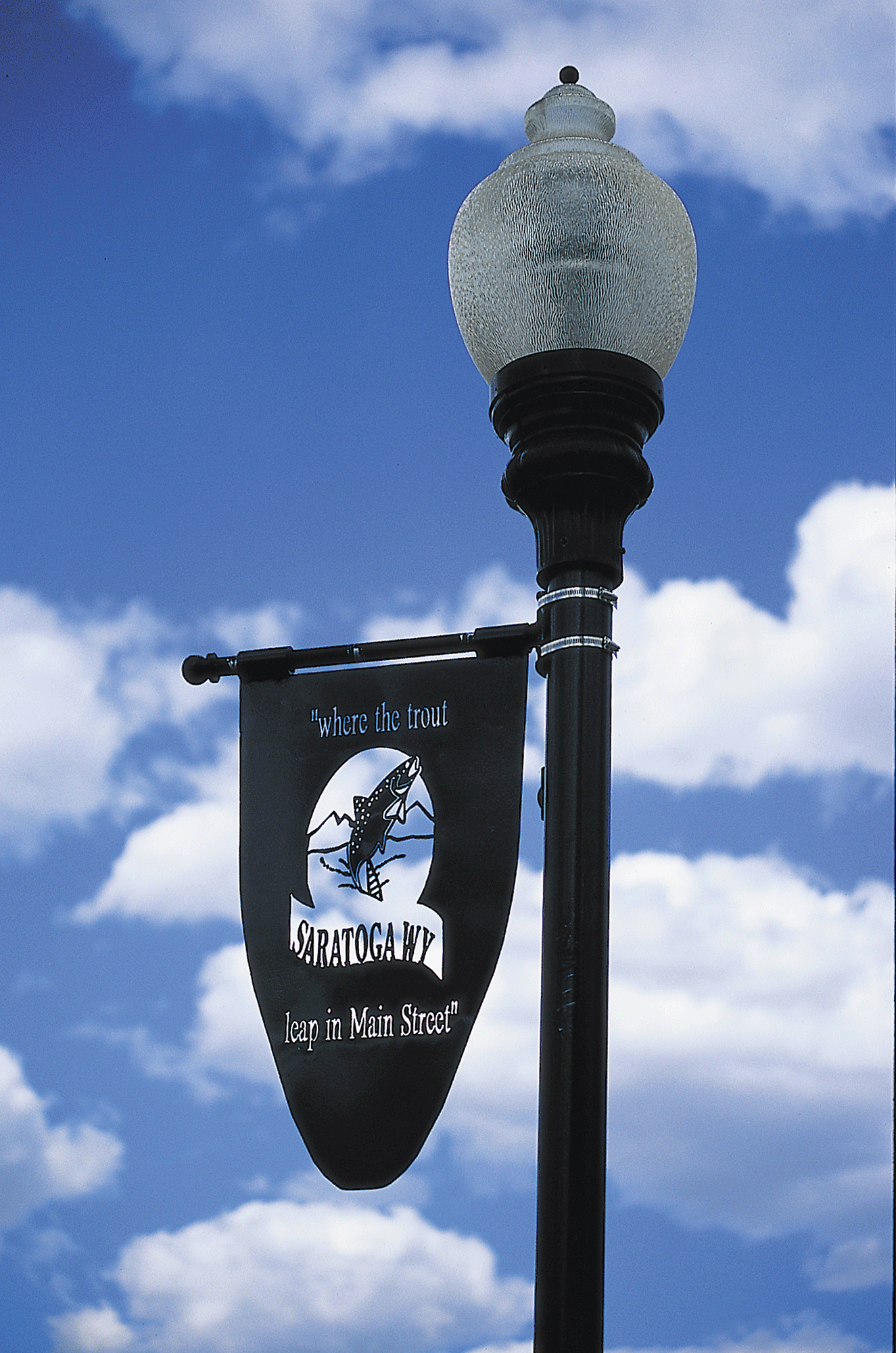
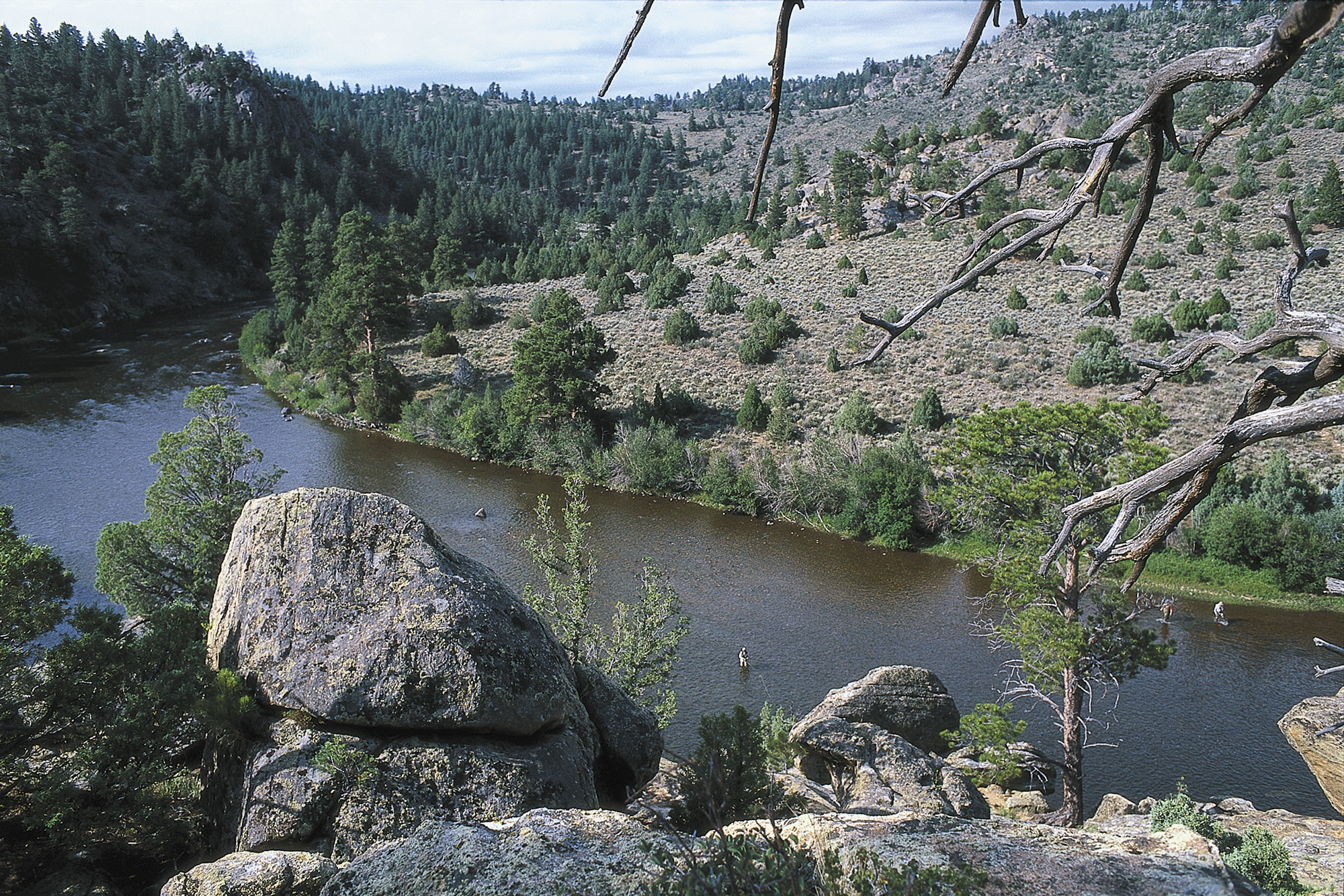
No Comments